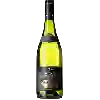
Domaine de BeaurepaireHaut Clos de la Pierre
This wine generally goes well with appetizers and snacks, lean fish or shellfish.
Food and wine pairings with Haut Clos de la Pierre
Pairings that work perfectly with Haut Clos de la Pierre
Original food and wine pairings with Haut Clos de la Pierre
The Haut Clos de la Pierre of Domaine de Beaurepaire matches generally quite well with dishes of shellfish, appetizers and snacks or lean fish such as recipes of marinated shrimp sautéed asian style, mini burgers or asian style fish papillote (very healthy).
Details and technical informations about Domaine de Beaurepaire's Haut Clos de la Pierre.
Discover the grape variety: Datal
Intraspecific crossing obtained in 1956 between the Beirut date palm and the Alexandria muscatel. This variety is not widely cultivated in France, although it is registered in the Official Catalogue of table grape varieties, list A1. It can be found in South Africa, Portugal, etc.
Informations about the Domaine de Beaurepaire
The Domaine de Beaurepaire is one of of the world's greatest estates. It offers 12 wines for sale in the of Muscadet-Sevre et Maine to come and discover on site or to buy online.
The wine region of Muscadet-Sevre et Maine
The wine region of Muscadet-Sevre et Maine is located in the region of Muscadet of Muscadet of France. Wineries and vineyards like the Domaine de l'Ecu or the Domaine de Bellevue produce mainly wines white and red. The most planted grape varieties in the region of Muscadet-Sevre et Maine are Melon, Muscadelle and Folle blanche, they are then used in wines in blends or as a single variety. On the nose of Muscadet-Sevre et Maine often reveals types of flavors of cream, asparagus or baked apple and sometimes also flavors of honeydew melon, hay or citrus zest.
The wine region of Loire Valley
The Loire Valley is a key wine region in western France. It follows the course of the Loire River on its Long journey through the heart of France, from the inland hills of the Auvergne to the plains of the French Atlantic coast near Nantes (Muscadet country). Important in terms of quantity and quality, the region produces large quantities (about 4 million h/l each year) of everyday wines, as well as some of France's greatest wines. Diversity is another of the region's major assets; the styles of wine produced here range from the light, tangy Muscadet to the Sweet, honeyed Bonnezeaux, the Sparkling whites of Vouvray and the juicy, Tannic reds of Chinon and Saumur.
The word of the wine: Aggressive
Said of a wine with excessive, biting and unpleasant acidity.














